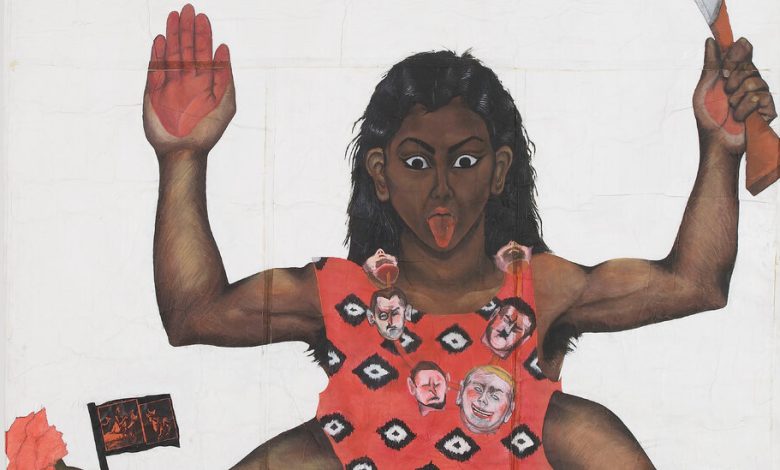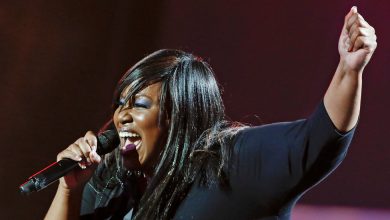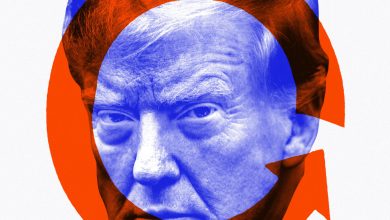For Women ‘Art Monsters,’ Both Beauty and Excess Are Key

ART MONSTERS: Unruly Bodies in Feminist Art, by Lauren Elkin
When the essayist Lauren Elkin first encountered the phrase that would provide the striking title for her new book, the moment felt to her like a “thunderbolt.” She was reading Jenny Offill’s novel “Dept. of Speculation” (2014), whose narrator had planned never to marry because she “was going to be an art monster instead.” A man could marry and be an art monster; a woman could not. An art monster doesn’t tend to the mundane demands of daily life, whether her own or others’. She is relentless, selfish, single-minded. To create, she must destroy — or, at the very least, choose.
“Mother or artist, not both,” Elkin writes in “Art Monsters.” Yet she offers the original, bracing definition of her subject only to abandon it. The author of “Flâneuse” (2017), which traced the stories of literary women walking through cities, Elkin takes an analogous approach in her new book: restless and curious, always on the move. She starts with monstrousness in the artist’s life but guides us toward monstrousness in the artist’s work. That monstrousness has often found form in art involving the body, especially those parts of it that are typically hidden — corporeal versions of what anthropologists call “matter out of place.”
That body isn’t sanitized, smooth or safe; it’s unruly, surprising, sometimes even grotesque. Not sexualized, but sexual. One of her first examples is Carolee Schneemann’s “Interior Scroll” (1975), in which the artist stood naked on a table in an East Hampton gallery and read aloud from a roll of paper that she pulled from her vagina. After Schneemann died in 2019, Elkin posted an image from the performance on Instagram, and the site took it down.
Schneemann is joined in this book by Hannah Wilke, Eva Hesse, Betye Saar, Kara Walker, Sutapa Biswas and Ana Mendieta, among other artists. Elkin also brings in writers like Virginia Woolf, Audre Lorde and Kathy Acker. Wilke, in particular, is someone she keeps returning to; a photograph of Wilke’s arresting figure — clad in dark tights and black boots, with one leg hiked up on a chair — graces the cover of the book, alluring and intimidating at once. Photographs from Wilke’s “S.O.S. Starification Object Series” showed the young artist, mostly topless, dotted with pieces of chewing gum that she had sculpted into tiny vulvas, striking the kind of flirtatious poses usually found in beauty magazines.
What makes this monstrous? “The problem of Hannah Wilke is the central problem of this book, and that is the problem of beauty for feminism,” Elkin writes. Before Wilke became ill, photographing herself dying of lymphoma, some critics considered her self-portraits suspect, accusing her “of courting the straight male gaze, and thwarting the female one.” Elkin thinks this binary is a trap. “To be gendered female is to be caught between beauty and excess,” she writes. “To be a monster is to insist on both.”
Elkin is such a nimble writer that it took me a while to realize I was losing the thread. Her readings of art are attentive and vivid. But by dispensing with the original definition of the art monster — dedicated to art to the exclusion of all else — Elkin also saps it of its power. She moves so far afield that even her early focus on the body recedes from view. Reflecting on a lovely painting by Vanessa Bell of oranges and lemons, she writes: “Her work is what finally convinces me that anyone can be an art monster: That monstrosity, understood in its broadest, most marvelous form, dwells more in the surprise of the work, than the personal life of the artist making it.”
It’s a nice, capacious sentiment. But in a book about “art monsters,” however defined, deciding that monstrosity lies in something as unobjectionable as “the surprise of the work” is playing it safe. Elkin writes that working on this book felt “risky,” especially for “a white American female at the end of the 20th century, groomed to be appropriate, exacting, friendly and accommodating, as pretty and as small as I could make myself, yet filled with rage at not being allowed to take up more space in the world.” For all Elkin’s formidable range as a critic, “Art Monsters” still contains traces of that careful, tentative person; the text is filled with caveats and asides betraying an anxiety that someone might read her or her book the wrong way.
Elkin is scrupulous about explaining the book’s form (“purposefully undisciplined, anti-disciplinary”); her use of the fragment (“it is the material from which we can rebuild”); even her choice of pronouns for an artist who uses both “she/her” and “they/them” (“I have retained ‘she/her’ for continuity with her self-description as that ‘girl with the mattress’”). Quoting from Audre Lorde’s cancer journals, in which Lorde declares her decision not to wear a prosthesis after her mastectomy, Elkin adds a dutiful footnote: “I want to be clear I am not advocating any particular response to mastectomies.” The compulsion to issue gratuitous explanations and disclaimers would seem to be at odds with her subject matter.
Sometimes Elkin is so careful that she seems to back herself into a corner. In a section on “Open Casket” — the controversial painting of Emmett Till by Dana Schutz, a white artist — Elkin tries to reconcile her own commitment to artistic freedom with calls for the work to be destroyed. “I do think Schutz ought to have destroyed the painting,” Elkin writes. “Not because she was encouraged to, but out of her own assertion of her authority as an artist.”
“Out of her own assertion of her authority as an artist”? Would an art monster destroy her own work? Does Elkin even consider Schutz to be an art monster? Whatever one thinks of the painting, Elkin’s muddled decree amounts to a fanciful compromise, neither righteous nor coherent.
“It is the job of the art monster to trouble these narratives,” Elkin writes, referring to familiar questions of representation and empathy that often get watered down to feel-good talking points. As correct as this sounds, there is something distinctly non-monstrous in Elkin’s depiction of troublemaking as a responsibility. I have a hard time envisioning the art monster who abides by anything so respectable as “the job.”
ART MONSTERS: Unruly Bodies in Feminist Art | By Lauren Elkin | Farrar, Straus & Giroux | 354 pp. | $35




